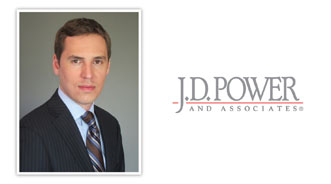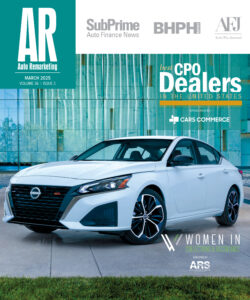New Leasing Pushes Past 23-Percent Penetration & Used Leasing Soars

While CNW Research is reporting that used-vehicle leasing soared in February, J.D. Power and Associates discovered that on the new-vehicle side, the lease penetration rate shot past the 23-percent mark.
J.D. Power credits the almost double-digit sequential climb to “more aggressive programs and the domestic brands’ partnerships.”
The latter factor, explained J.D. Power senior director Thomas King, refers to the new partnerships established between captive lenders and domestic automakers.
King said in an interview with Auto Remarketing last week that thanks to the relationships with captives, domestic automakers now have greater flexibility and can offer leases on a wider range of models.
Specifically, the 23.1-percent penetration rate notched in February was up from 19.3 percent in February 2010 and 21.1 percent in January.
Continuing on, King boiled the leasing surge down to a number of factors.
“Number one, continued availability of strong lease programs, and particularly in some of the segments where traditionally we haven’t seen elevated lease mix,” King said, pointing to large pickups and compact basic vehicles as examples.
He noted that pickups in recent history have seen lease penetration in the low single digits, but in February it was at 7 percent. While not exceedingly high, obviously, this rate marks 38-percent growth over January’s level and 200-percent growth over the February 2010 penetration.
Compact basics saw lease a penetration rate of 2 percent a year ago, King explained, and this climbed to 10 percent in February.
“That really reflects manufacturers making competitive leases available to customers,” King shared.
Secondly, King noted that the market is seeing “increased eligibility for lease programs.”
He continued: “There’s a little bit of relaxation in the credit criteria to be able to qualify for a lease. That’s an area where manufacturers have been quite restrictive in terms of who can actually obtain that lease program.”
Additionally, King said the lease pull-ahead programs helped push the rate, as well.
“We also saw some lease pull-ahead programs in February. Those programs are pulling ahead lease maturities from future months, which tended to inflate overall industry lease mix, as well,” he pointed out.
The following is some data J.D. Power provided to better illustrate the month’s leasing trends:
| Segment | Feb. Lease Penetration | M-O-M Increase | Y-O-Y Increase |
| Comp Conv | 22 percent | 6 percent | 7 percent |
| Mid Conv | 32 percent | 19 percent | 21 percent |
| Lrg PU | 7 percent | 38 percent | 200 percent |
| Comp CUV | 24 percent | 9 percent | 45 percent |
| Mid CUV | 22 percent | 22 percent | 33 percent |
| C. Prem Conv | 56 percent | 8 percent | 5 percent |
| Comp Basic | 10 percent | 18 percent | 367 percent |
| Mid Utl | 25 percent | 8 percent | 98 percent |
| Mid Van | 22 percent | 0 percent | 8 percent |
| Lrg Conv | 18 percent | 64 percent | 4 percent decrease |
| Industry |
23.1 percent | 9.5 percent | 19.7 percent |
Used Leasing Trends
Moving over to the used-vehicle side of the market, CNW Research saw a 20-percent hike in the number of used models leased during February (60,824 units). This total was down 1.4 percent from the 61,681 used units leased in January.
CNW also shared that the cap cost for February’s leases was at $37,538, down 1.7 percent year-over-year. This coincided with more short-term units coming back into the fold.
“These short-term cars and trucks typically come off a lease in three years or less and can be re-leased with relative ease,” explained CNW president Art Spinella.
That said, Spinella said the future of the used-leasing market appears like it will be “mediocre.”
He pointed out that 2007 saw more than 1.2 million leases originated. Independent lease companies wrote the lion’s share of these, Spinella pointed out. Last year, the number of used leases dipped to about 976,000.
Should this year’s pace continues, used leases will likely total in the neighborhood of 1.1 million units in 2011.
“That will depend on continuing supply and a growing number of independent lease companies,” he explained.
CPO Takes Some of Used Leasing’s “Thunder”
Interestingly enough, Spinella also found that the used-leasing market has seen its momentum partly shift to the certified pre-owned industry, noting that these markets often target a similar vehicle demographic (fairly young, low mileage, good- to very-good-condition units).
"This narrows down to basically a relatively few financed cars and trucks that are coming off of a three year (or shorter) contract or off-lease vehicles on 42-month or shorter contracts,” Spinella shared.
He explained that the mileage and condition of rental vehicles as well as corporate and government fleet units typically doesn’t gibe with automakers’ certified pre-owned guidelines. As such, dealers often have to choose whether they want to certify or lease the available models.
“In a significant number of instances, independent lease companies will purchase certifiable or even CPO cars and quickly turn them into leases,” he continued.
“For dealers, however, if a car or truck is certifiable by the factory, the potential profit is better if sold off the dealership’s lot,” he added.
Spinella noted that certified units typically fetch an average premium of $1,500, “and that includes many that are sold at ‘book’ value with certification being used as an incentive to the customer to make the acquisition quickly.”

 View The Latest Edition
View The Latest Edition

